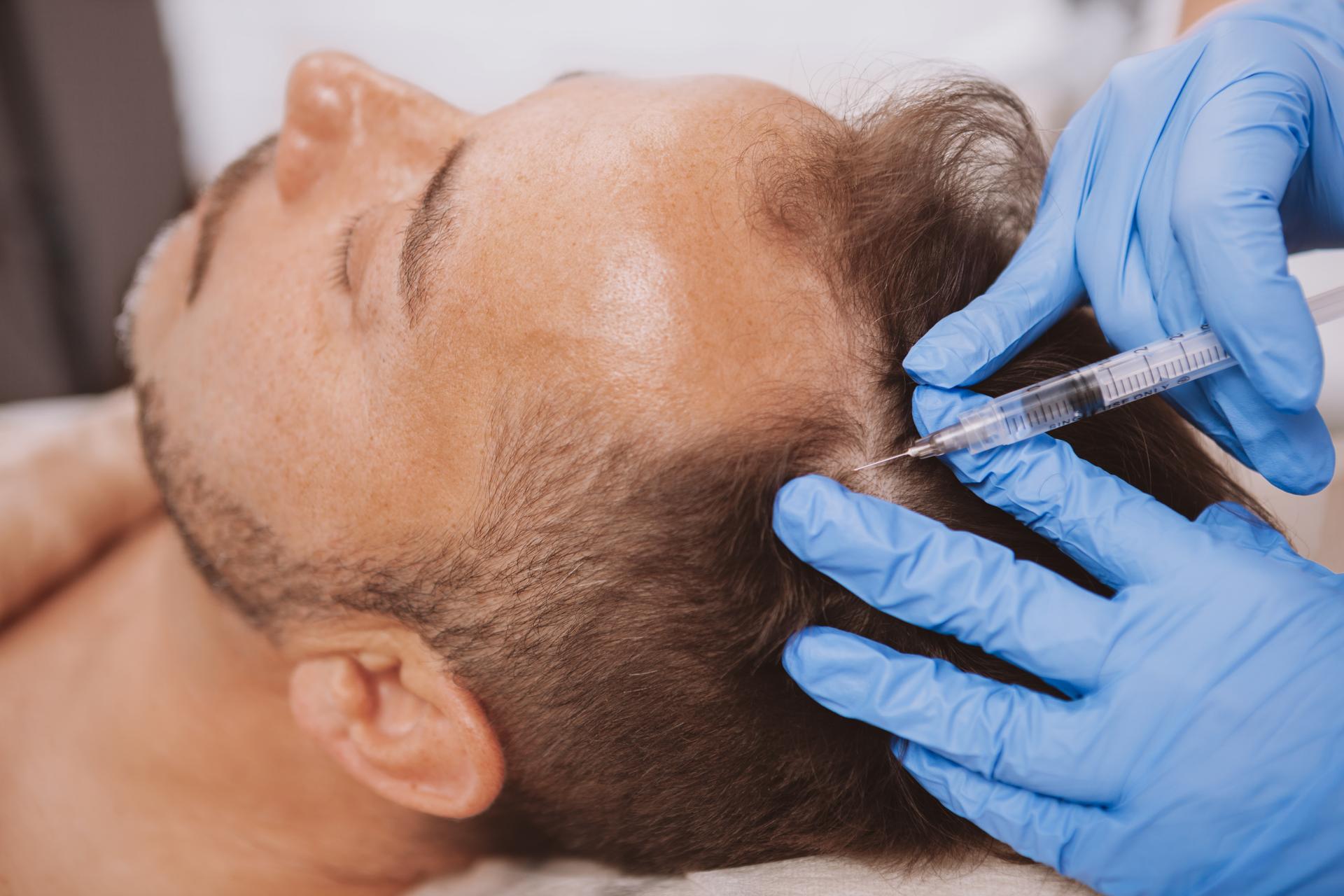Looking in the mirror has been a daily reminder of your hair loss. Now you’re ready to do something about it — but with so many options available, how do you choose the right path forward?
At New Jersey Hair Restoration Center in Freehold Township, NJ, Dr. Emil Shakov takes time to understand your unique situation before recommending either Follicular Unit Transplantation (FUT) or Follicular Unit Excision (FUE). Both techniques can deliver natural-looking results, but they work differently and have distinct advantages. Let’s explore how each method works, who they’re best suited for, and what you can expect from the restoration process.
What Is FUT?
FUT, or Follicular Unit Transplant, involves removing a strip of scalp to harvest hair follicles for transplantation. This technique is ideal for covering large balding areas in a single session and is a preferred option for patients seeking extensive hair coverage.
Benefits of FUT Transplant:
- High graft yield per session for extensive hair restoration
- Shorter procedure time compared to FUE
- Cost-effective for large treatment areas
- Long-lasting, natural-looking results
What Is FUE?
FUE, or Follicular Unit Excision, involves extracting individual hair follicles with a specialized punch device before implanting them into thinning areas. Unlike FUT, FUE does not require removing a strip of scalp, making it less invasive and ideal for those concerned about scarring.
Benefits of FUE Transplant:
- No linear scar, suitable for patients who prefer short hairstyles
- Quicker recovery with minimal post-procedure discomfort
- Natural-looking results with precise follicle placement
- Versatile donor options, including body hair when necessary
Which Method Is Right for You?
Choosing between FUT vs. FUE depends on factors like the extent of your hair loss, your lifestyle, your recovery preferences, and your budget. Dr. Emil Shakov provides comprehensive consultations to recommend the most suitable option.
FUT is ideal for:
- Patients requiring a high number of grafts
- Individuals with longer hair to conceal the linear scar
- Those seeking a more cost-effective solution
FUE is ideal for:
- Patients preferring shorter hairstyles
- Individuals seeking minimal scarring
- Those wanting a faster recovery time
There is no one-size-fits-all answer. What matters is finding the approach that aligns with your goals, lifestyle and comfort level. Dr. Shakov will walk you through all your options, answer your questions, and help you make a decision.
Introducing PepFactor for Hair Restoration
In addition to these traditional transplant methods, we offer PepFactor—a non-surgical treatment that uses peptides and your body’s plasma to stimulate hair growth. This therapy can complement both FUT and FUE.
Benefits of PepFactor:
- Non-surgical and minimally invasive
- Stimulates natural hair regrowth
- Enhances scalp health and hair density
- Quick sessions with minimal downtime
Adding PepFactor can boost the effectiveness of your hair transplant results.
What to Expect During Your Hair Transplant Procedure
Initial Consultation:
Dr. Shakov assesses your hair loss, discusses goals, and recommends FUT or FUE based on your needs.
Preparation: On procedure day, the donor area is cleaned and numbed with local anesthesia.
Harvesting:
FUT: A strip of scalp is removed to extract hair follicles.
FUE: Individual follicles are extracted using a specialized tool.
Implantation:
Grafts are carefully placed to match your natural hair growth pattern.
Post-Procedure Care:
Detailed aftercare instructions are provided to promote optimal healing.
Recovery and Results:
FUT Recovery: Takes 10-15 days; stitches are removed within two weeks.
FUE Recovery: Most patients resume normal activities within 5-7 days.
Growth Timeline:
New hair typically begins to appear at three months, with full results visible by 9-12 months.
Are There Any Risks Associated with FUT or FUE?
Both FUT and FUE are generally safe, especially with an experienced surgeon like Dr. Shakov. Potential risks include swelling, infection, bleeding, numbness, scarring, and folliculitis. Some patients may experience temporary “shock loss,” where transplanted or existing hair sheds but regrows in time. Proper aftercare and choosing a skilled provider help minimize these risks.
How Much Does a Hair Transplant Cost?
The cost of a hair transplant varies depending on factors like the number of grafts, method chosen, and clinic location. FUT is typically more cost-effective, while FUE may be higher in price due to its advanced technique. Since hair restoration is generally considered cosmetic, insurance rarely covers the procedure unless related to trauma. To explore pricing, consult New Jersey Hair Restoration Center—financing options are available to make treatment accessible.
How Should I Care for My Hair After a Hair Transplant?
Your transplanted hair is permanent, but a few simple habits will help ensure it looks its best for years to come. We recommend:
Gentle Hair Care Products
Switch to sulfate-free shampoos and conditioners that won’t irritate your scalp. Avoid harsh chemicals and heated styling tools until Dr. Shakov gives you the green light.
Regular Check-ups
Schedule follow-up appointments with Dr. Shakov so we can monitor your progress and address any concerns early. These visits are especially important during the first year as your new hair grows in.
Supporting Healthy Growth
Consider complementary treatments like PepFactor to enhance your results. These therapies can improve scalp health and support the growth of both transplanted and existing hair.
Protecting Your Investment
Remember that while transplanted hair is permanent, your natural hair may continue to thin over time. Dr. Shakov can help you develop a proactive plan to maintain your overall hair density and address any future concerns before they become noticeable.
Frequently Asked Questions
Will my transplanted hair look natural?
Yes. Dr. Shakov’s precise placement of follicles ensures a natural look that follows your hair’s growth pattern.
Is the procedure painful?
Local anesthesia ensures comfort. Any mild soreness post-procedure typically resolves within days.
How soon will I see results?
Hair growth begins around three months post-procedure, with full results in 9-12 months.
Are there side effects?
Common side effects include mild swelling, redness, and temporary scabbing, which usually subside within a week.
Can women undergo hair transplant procedures?
Yes. Both FUT and FUE are suitable for women experiencing hair loss.
Are hair transplants effective for all ages?
They work best for adults with stabilized hair loss.
Do hair transplants work for all skin tones and hair types?
Yes. FUT and FUE can be customized for diverse hair textures and skin tones.
How soon can I resume physical activities?
Light activities can resume within days, but strenuous exercise should be avoided for two weeks.
Can FUT and FUE be combined?
Yes. Combining methods can maximize graft yield for suitable candidates.
Can hair transplants be combined with other treatments?
Absolutely. Treatments like PepFactor, PRP, and Exosome treatments can enhance results.
Will I need multiple sessions?
It depends on your desired density and extent of hair loss—some patients require more than one session.
Why Choose New Jersey Hair Restoration Center?
Led by Dr. Emil Shakov, a board-certified aesthetic surgeon, our center in Freehold Township, NJ provides tailored hair restoration solutions with advanced methods, including FUT, FUE, PepFactor, and Exosome treatments. Patients receive personalized care, ensuring natural-looking results with minimal downtime.
Take the First Step Toward Restoring Your Hair
Regain your confidence with a FUT transplant, FUE transplant, or adjunct treatments like PepFactor. Schedule your consultation with Dr. Shakov at New Jersey Hair Restoration Center in Freehold Township, NJ, and take the first step toward fuller, healthier hair.


